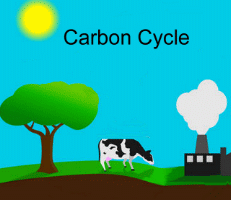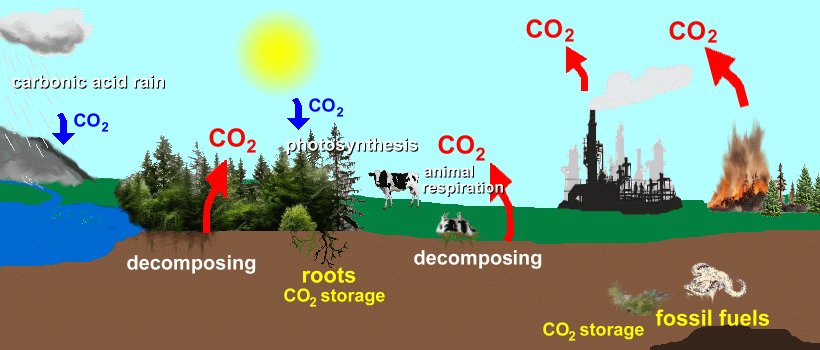  The carbon cycle is the process that moves carbon between plants, animals, the soil, and the atmosphere. Carbon is the fourth most abundant element in the universe. With its ability to form complex molecules such as DNA and proteins, carbon makes life on Earth possible. Most of Earth's carbon is stored in rocks and sediments, in fossil fuels, and in living organisms. Carbon in the form of carbon dioxide (CO2) is also an important part of our atmosphere, where it helps to control the Earth's temperature.
The carbon cycle is the process that moves carbon between plants, animals, the soil, and the atmosphere. Carbon is the fourth most abundant element in the universe. With its ability to form complex molecules such as DNA and proteins, carbon makes life on Earth possible. Most of Earth's carbon is stored in rocks and sediments, in fossil fuels, and in living organisms. Carbon in the form of carbon dioxide (CO2) is also an important part of our atmosphere, where it helps to control the Earth's temperature.
Carbon is captured and stored:
 Carbon is returned to the atmosphere:
Carbon plays an essential role in biology because of its ability to form many bonds, in a seemingly endless variety of complex organic molecules. Many organic molecules contain carbon atoms that have formed strong bonds to other carbon atoms, combining into long chains and rings. Such carbon chains and rings are the basis of living cells. For instance, DNA is made of two intertwined molecules built around a carbon chain. The bonds in these long carbon chains contain a lot of energy. When the chains break apart, the stored energy is released. This energy makes carbon molecules an excellent source of fuel. Humans have a huge effect on the carbon cycle by burning wood, fossil fuels (such as oil, coal, and natural gas), and other forms of carbon. This action releases stored carbon into the atmosphere, where it becomes the greenhouse gas carbon dioxide. Excessive amounts of this gas released in the past two centuries is the main cause of climate change. |